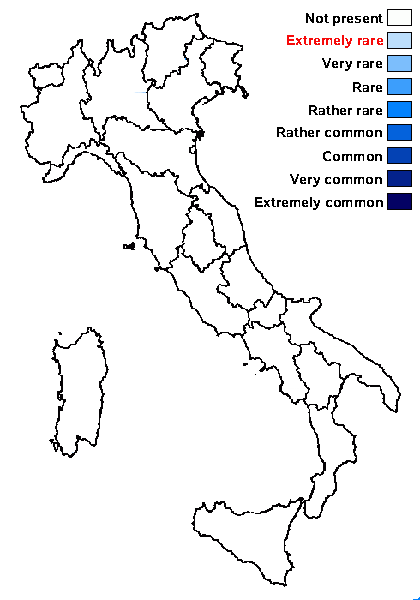Staurothele argillacea (Flagey) Zahlbr.
Cat. Lich. Univ., 1: 162, 1922.. Basionym: Stigmatomma argillaceum Flagey - Catal. Lich. Algérie: 118, 1896.
Synonyms:
Distribution:
Description: Thallus crustose, episubstratic, rather thick, finely but distinctly areolate, yellowish brown. Upper cortex indistinctly delimited; algal layer continuous. Perithecia black, usually collated in the center of the areoles, subglobose, up to 0.3 mm in diam., hemispherically projecting to almost fully superficial. Involucrellum present; hymenial algae isodiametrical, 4-5 µm wide; hamathecium of periphysoids, interascal filaments absent, the hymenial gel hemiamyloid. Asci 2-spored, clavate, the wall thickened above, with an ocular chamber, after dehiscence with a delicate extruded endotunica, I-, K/I-. Ascospores muriform, brown, ellipsoid, 40-45 x 15-18 µm. Photobiont chlorococcoid, present in both thallus and hymenium. Spot tests: K-, C-, KC-, P-, UV-. Chemistry: without lichen substances.Note: a long-forgotten species only known from Algeria, growing on clayey soil, the only terricolous Staurothele with 2-spored asci. To be looked for in the driest parts of Mediterranean Italy, especially in Sicily.
Growth form: Crustose
Substrata: soil, terricolous mosses, and plant debris
Photobiont: green algae other than Trentepohlia
Reproductive strategy: mainly sexual
Poorly known taxon in need of further study

Predictive model
Growth form: Crustose
Substrata: soil, terricolous mosses, and plant debris
Photobiont: green algae other than Trentepohlia
Reproductive strategy: mainly sexual
Poorly known taxon in need of further study

Predictive model

